Festivals in Brazil reflect the nation’s diverse history, blending Indigenous, African, and European influences. From communal worship rituals to the lively Carnival, each festival tells a unique story through colourful performances. These celebrations are deeply rooted in regional culture, artistic traditions, and historical memory, far beyond the spectacles of the West. In Brazil, festivals are vital to community life, preserving intangible heritage and offering a glimpse into the country’s rich cultural tapestry, whether through rural customs or spiritual practices.
10 Famous Festivals In Brazil You Should Experience
Following are some of the important festivals in Brazil, which have had cultural significance across generations and geographic regions.
1. Carnival / Carnaval
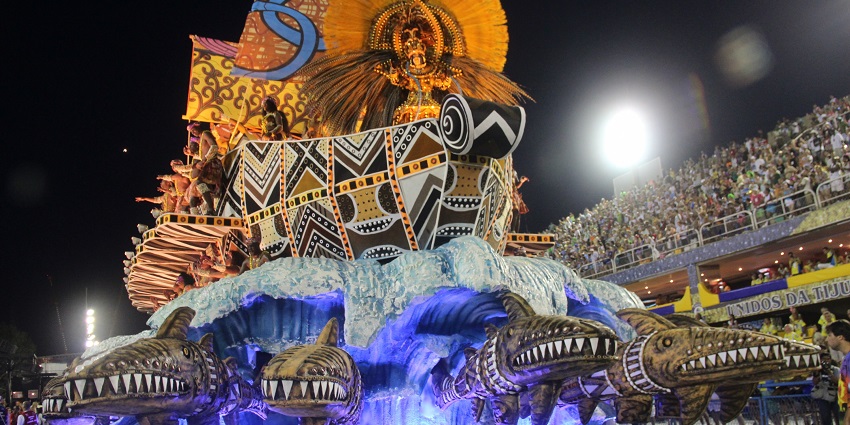
Photo: Agência Brasil / Wikimedia Commons
The Rio Carnival is a vibrant celebration of Brazil’s cultural heritage, blending colonial Catholic traditions with Afro-Brazilian influences. Samba schools spend months preparing for the elaborate parades, where rhythm, motion, and storytelling come together. While the glitter and glamour captivate tourists, Carnival also serves as a platform for community identity and political expression, tackling social issues and celebrating resistance. Behind the festivities, artisans, musicians, and choreographers contribute their hard work, driving both entertainment and economic growth. It’s a true testament to Brazil’s spirit and history.
Location: Celebrated nationwide, best in Rio de Janeiro
Best Time To Visit: February or March
2. Festa Junina
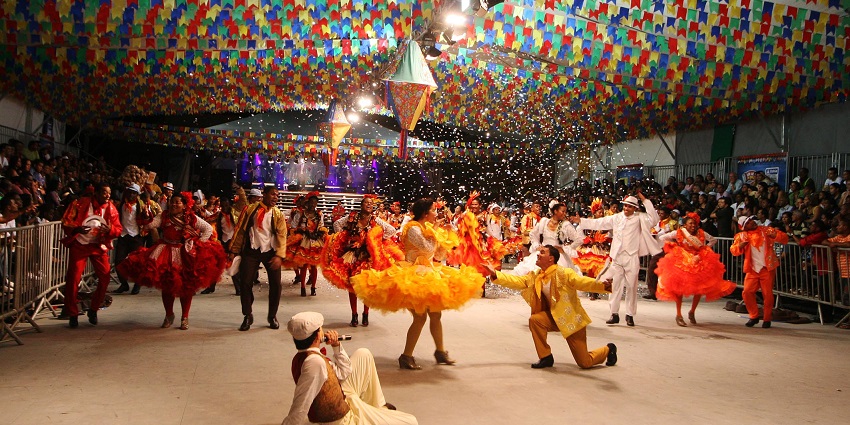
Photo: Agecom Bahia / Wikimedia Commons
Festa Junina is a vibrant celebration of Brazil’s religious and agricultural roots. It blends European Midsummer traditions with Catholic devotion, particularly to St John, St Anthony, and St Peter. Over time, it incorporated rural Brazilian elements, including folk theatre and satire. The celebration features temporary fairs with flags and thatched booths, recreating a countryside atmosphere. Central to the festival are playful reenactments of country weddings, with lively forro music that preserves oral traditions, keeping rural customs alive in modern times.
Location: Nationwide, especially Northeast Brazil
Best Time To Visit: June
3. Parintins Folklore Festival
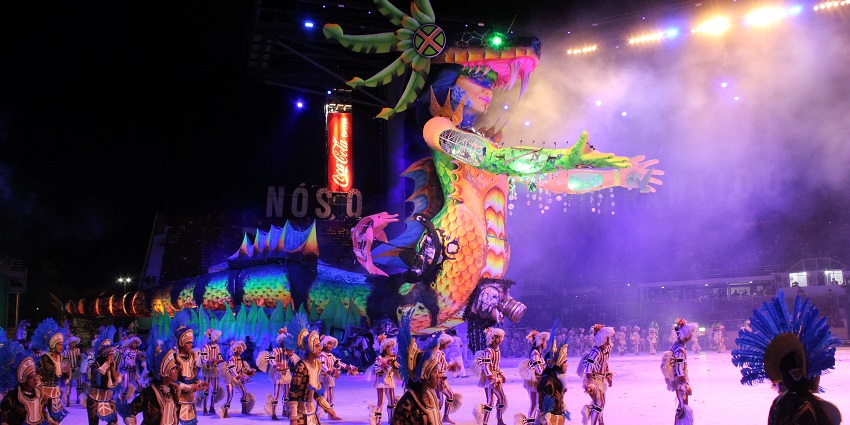
Photo: Leandrosnascimento / Wikimedia Commons
The Parintins Folklore Festival blends indigenous mythology, regional history, and theatrical performance in the heart of the Amazon. The festival’s dual-team competition, Garantido and Caprichoso, brings to life stories of forest spirits, deities, and historical struggles through music, dance, floats, and characters like the Amazonian warrior and shaman. This vibrant event celebrates cultural pride, giving a voice to marginalised communities. It’s a unique blend of traditional craftsmanship and modern design, highlighting Amazonian culture and environmental issues.
Location: Parintins, Amazonas
Best Time To Visit: Last weekend of June
4. Oktoberfest
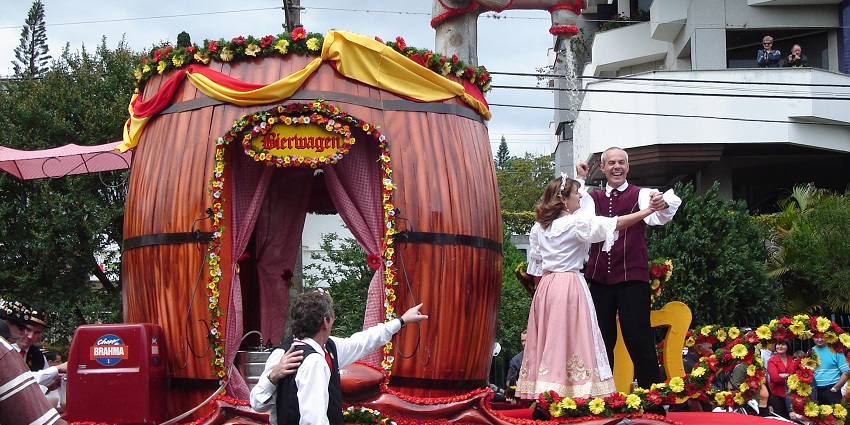
Photo: Henrique / Wikimedia Commons
Oktoberfest in Blumenau is a celebration of German-Brazilian heritage, going beyond beer to showcase the rich culture and traditions of German immigrants. Founded in 1984 to boost the local economy after a flood, the festival honours 19th-century German customs through traditional music, dance, and authentic architecture. Families participate in fun competitions like beer stein-holding and “chopp em metro” races. This cultural event not only preserves ethnic identity but also promotes unity and cultural diversity within Brazil.
Location: Blumenau, Santa Catarina
Best Time To Visit: October
5. Lavagem do Bonfim
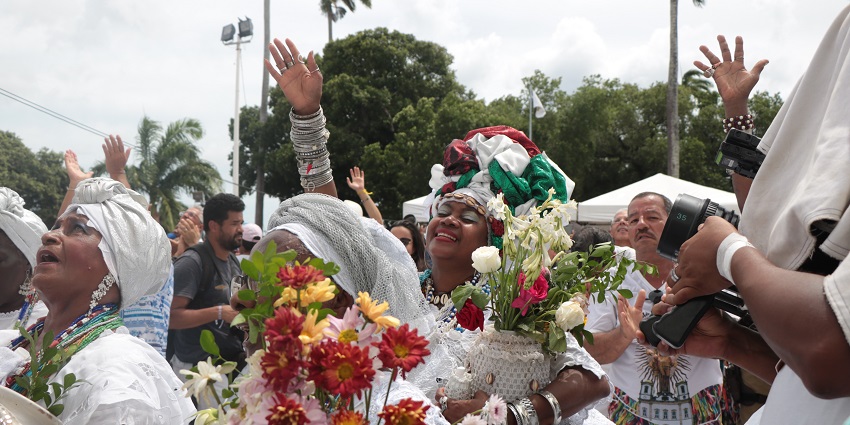
Photo: Turismo Bahia / Wikimedia Commons
Lavagem do Bonfim is a powerful ritual of spiritual cleansing and unity, blending Afro-Brazilian and Catholic traditions. The procession begins at the Church of Conceição da Praia and ends at the Church of Bonfim. Women, many of whom follow Candomblé, carry scented water to clean the church stairs. Set to songs and drumming, the ceremony merges African orixás with Catholic saints. It’s a meaningful celebration of history and resistance, where Afro-Brazilian women reclaim public religious space and shape Salvador’s cultural identity.
Location: Salvador, Bahia
Best Time To Visit: January
6. Círio de Nazaré
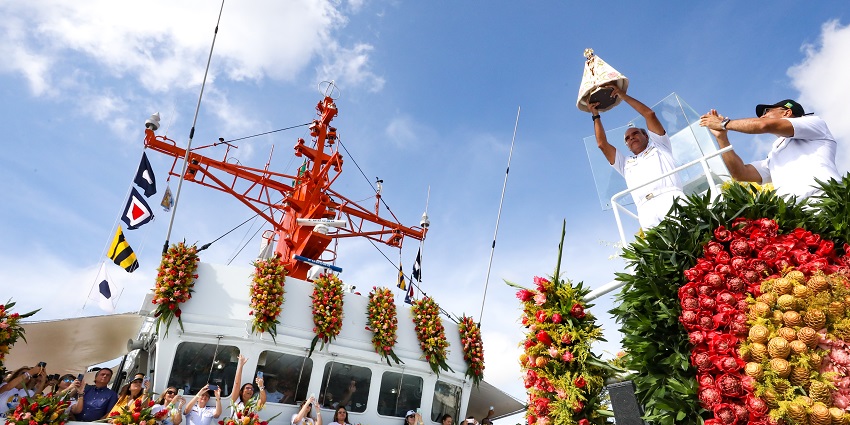
Photo: Palácio do Planalto / Wikimedia Commons
The Círio de Nazaré is a powerful display of Marian devotion in Belém, drawing millions of pilgrims. Central to the event is an image of Our Lady of Nazareth, believed to have miraculous powers, which is carried through the city in an emotional procession. Many participants walk barefoot or carry wax body parts, seeking healing. The festival features various processions, on foot, by river, and even on motorcycles, bringing communities together in faith and tradition. It also supports local artisans, vendors, and services.
Location: Belém, Pará
Best Time To Visit: October
7. Festival de Inverno
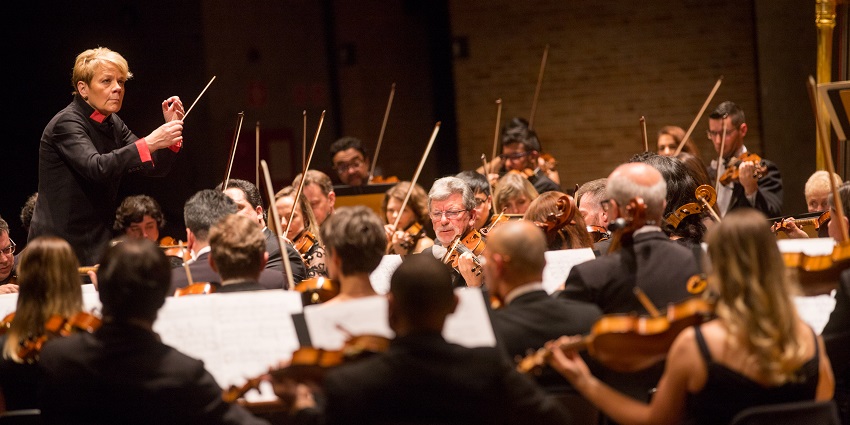
Photo: Governo do Estado de São Paulo / Wikimedia Commons
The Festival de Inverno is Brazil’s premier classical music event, showcasing renowned orchestras and emerging talent from around the world. Held in various venues, from auditoriums to open-air spaces, it offers a unique acoustic experience. The festival features symphonies, chamber music, recitals, and masterclasses, making it both a performance and learning hub. What sets it apart is its commitment to accessibility, with many free performances and outreach to schools and underserved communities, helping to popularise classical music and promote cultural exchange.
Location: Campos do Jordão, São Paulo
Best Time To Visit: July
8. Bumba Meu Boi
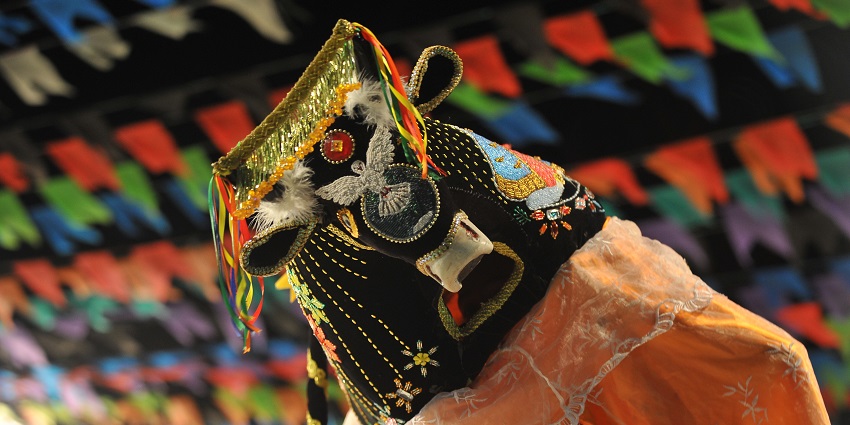
Photo: Mauricioalexandre55 / Wikimedia Commons
Bumba Meu Boi is a vibrant folkloric tradition from northeast Brazil, combining music, dance, puppetry, and satire. The story of a beloved ox who dies and returns to life carries deep symbolism, touching on themes like colonialism, racial conflict, and spirituality. Local communities spend months creating intricate costumes, and the performances help preserve regional dialects and traditions. More than just a festival, it’s a celebration of culture, bringing people together to share stories and keep traditions alive.
Location: São Luís, Maranhão
Best Time To Visit: June – July
9. Festival de Cachaça
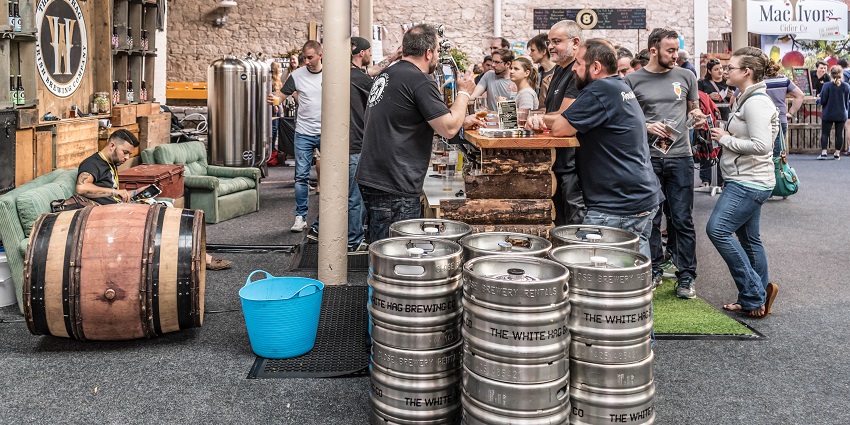
Photo: William Murphy / Wikimedia Commons / Image For Representation Only
The Festival de Cachaça in Paraty celebrates Brazil’s iconic spirit in a historic colonial town. More than just tastings, the event educates visitors on cachaça’s cultural and economic significance. Exhibits highlight sugarcane farming, copper stills, and the role of cachaça in Brazil’s resistance movements. Culinary pairings and mixology demos show its versatility in Brazilian cuisine. The festival also promotes sustainable practices, blending tradition with environmental awareness, while honouring cachaça as a symbol of national identity and artisanal craftsmanship in Brazil’s growing craft beverage scene.
Location: Paraty, Rio de Janeiro
Best Time To Visit: August
10. Festa do Divino
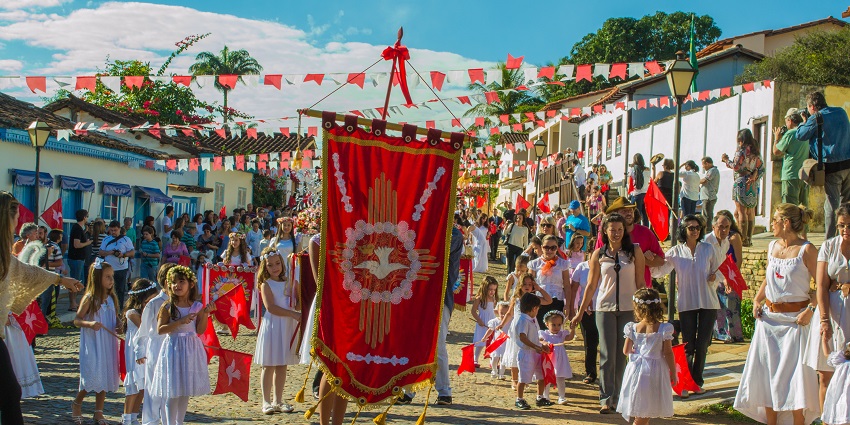
Photo: Rossyni Gomes Pompêo de Pina / Wikimedia Commons
Festa do Divino is a traditional religious festival that celebrates the descent of the Holy Spirit and honours Brazil’s colonial history. The event includes a novena, which leads to the Cavalhadas – a medieval-style tournament symbolising the Christian battle against the Moors. Participants wear historical costumes and armour, creating a sense of heritage. The town comes alive with processions, floats, and music, while community kitchens prepare “almoços do Divino”, reflecting hospitality and collective effort. It’s a key event for both spiritual and cultural unity in Brazil.
Location: Pirenópolis, Goiás
Best Time To Visit: May or June
Brazil’s festivals are a vibrant mix of colour, music, and tradition. They reflect the country’s rich history, faith, and cultural diversity. These celebrations bring communities together, preserving traditions in a changing world. Whether it’s music, rituals, or local customs, attending a Brazilian festival offers a unique chance to experience the country’s living heritage. Plan your trip with TripXL and explore Brazil’s diverse culture.
Cover Photo: Tet / Wikimedia Commons


 WhatsApp
WhatsApp
 Twitter
Twitter









